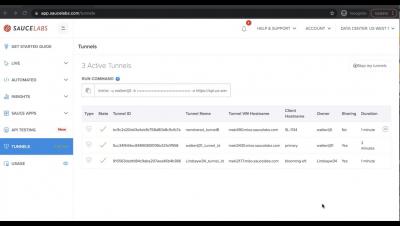Systems | Development | Analytics | API | Testing
%term
Sauce Connect Shared Tunnels
How to Power Rapid Transformation in Financial Services with Snowflake | Snowflake Summit 2021
Rollbar Tip of the Day: Item status & Severity level
How to Reduce Memory Bloat in Ruby
The issue of memory bloat in Ruby applications is a topic of frequent discussion. In this post, we will look at how Ruby memory management can go wrong, and what you can do to prevent your Ruby application from blowing up. First, we need to understand what bloat means in the context of an application’s memory. Let’s dive in!
Integrate Performance Tests Into CI/CD Using Github Actions
We have already wrote previously about how you can automate your testing routines without using the graphical interface but by using Loadero API instead. In this blog post we will show how you can integrate performance and load tests into your CI/CD workflows with the help of Github Actions. Github Actions allow you to automate and execute your development workflows directly from your repository which makes the integration very simple.
Agency Reporting: 9 Tips to Effectively Prove Your Value to Clients
Creating Dashboards from Multiple Data Sources - a Marketing Superpower
A Guide to Email Testing using MailHog (in localhost)
It can be a real headache to test contact forms or other outgoing emails from your website or application locally. To permit mail, you ought to configure your nearby web server and waste plenty of time expecting the mail to reach for your inbox, if it does at all. Furthermore, if you test with your personal email account as the sender, you risk damaging your email address. So, what should you do? You can use tools like MailHog and others, which are great for sending transactional emails.
APM With Prometheus and Grafana on Kubernetes Ingress
While monitoring is an important part of any robust application deployment, it can also seem overwhelming to get a full application performance monitoring (APM) stack deployed. In this post, we’ll see how operating a Kubernetes environment using the open-source Kong Ingress Controller can simplify this seemingly daunting task! You’ll learn how to use Prometheus and Grafana on Kubernetes Ingress to simplify APM setup.











